AI Research
Mission under way to save ‘world’s most beautiful’ snails

Science correspondent, BBC News
 Bernardo Reyes-Tur
Bernardo Reyes-TurResearchers have embarked on a mission to save what some consider to be the world’s most beautiful snails, and also unlock their biological secrets.
Endangered Polymita tree snails, which are disappearing from their native forest habitats in Eastern Cuba, have vibrant, colourful and extravagantly patterned shells.
Unfortunately, those shells are desirable for collectors, and conservation experts say the shell trade is pushing the snails towards extinction.
Biologists in Cuba, and specialists at the University of Nottingham in the UK, have now teamed up with the goal of saving the six known species of Polymita.
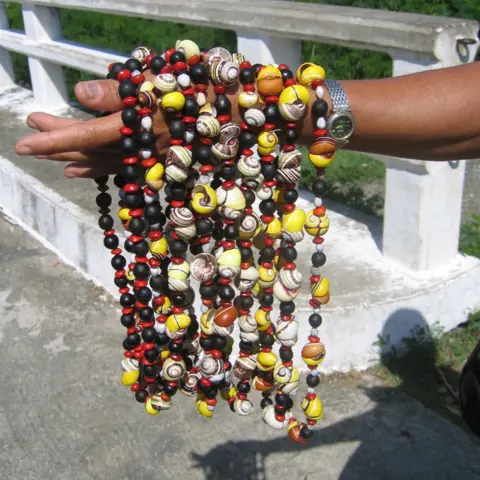 Angus Davison
Angus DavisonThe most endangered of those is Polymita sulphurosa, which is lime green with blue flame patterns around its coils and bright orange and yellow bands across its shell.
But all the Polymita species are strikingly bright and colourful, which is an evolutionary mystery in itself.
“One of the reasons I’m interested in these snails is because they’re so beautiful,” explained evolutionary geneticist and mollusc expert Prof Angus Davison from the University of Nottingham.
The irony, he said, is that this is the reason the snails are so threatened.
“Their beauty attracts people who collect and trade shells. So the very thing that makes them different and interesting to me as a scientist is, unfortunately, what’s endangering them as well.”
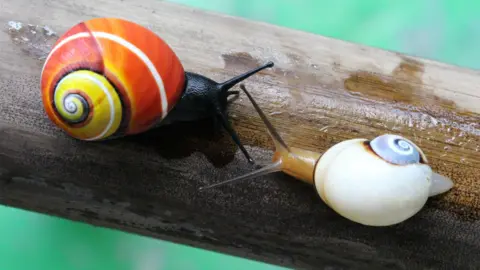 Bernardo Reyes-Tur
Bernardo Reyes-TurSearching online with Prof Davison, we found several platforms where sellers, based in the UK, were offering Polymita shells for sale. On one site a collection of seven shells was being advertised for £160.
“For some of these species, we know they’re really quite endangered. So it wouldn’t take much [if] someone collects them in Cuba and trades them, to cause some species to go extinct.”
Shells are bought and sold as decorative objects, but every empty shell was once a living animal.
 Bernardo Reyes-Tur
Bernardo Reyes-TurWhile there are international rules to protect Polymita snails, they are difficult to enforce. It is illegal – under the Convention on International Trade in Endangered Species – to take the snails or their shells out of Cuba without a permit. But it is legal to sell the shells elsewhere.
Prof Davison says that, with pressures like climate change and forest loss affecting their natural habitat in Cuba, “you can easily imagine where people collecting shells would tip a population over into local extinction”.
 Angus Davison
Angus DavisonTo try to prevent this, Prof Davison is working closely with Prof Bernardo Reyes-Tur at the Universidad de Oriente, Santiago de Cuba, who is a conservation biologist.
The aim of this international project is to better understand how the snails evolved and to provide information that will help conservation.
Prof Reyes-Tur’s part of the endeavour is perhaps the most challenging: Working with unreliable power supplies and in a hot climate, he has brought Polymita snails into his own home for captive breeding.
“They have not bred yet, but they’re doing well,” he told us on a video call.
“It’s challenging though – we have blackouts all the time.”
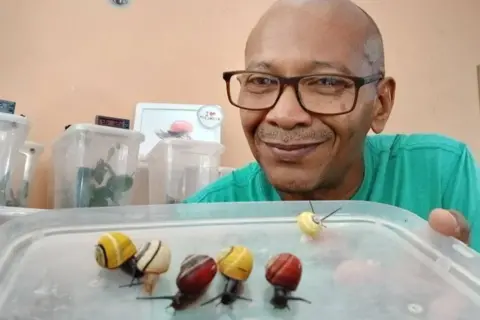 Bernardo Reyes-Tur
Bernardo Reyes-TurMeanwhile, at the well-equipped labs at the University of Nottingham, genetic research is being carried out.
Here, Prof Davison and his team can keep tiny samples of snail tissue in cryogenic freezers to preserve them. They are able to use that material to read the animals’ genome – the biological set of coded instructions that makes each snail what it is.
The team aims to use this information to confirm how many species there are, how they are related to each other and what part of their genetic code gives them their extraordinary, unique colour patterns.
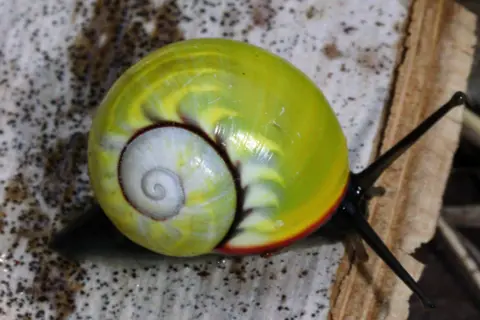 Angus Davison
Angus DavisonThe hope is that they can reveal those biological secrets before these colourful creatures are bought and sold into extinction.
“Eastern Cuba is the the only place in the world where these snails are found,” Prof Davison told BBC News.
“That’s where the expertise is – where the people who know these snails, love them and understand them, live and work.
“We hope we can use the genetic information that we can bring to contribute to their conservation.”
AI Research
‘The New Age of Sexism’ explores how misogyny is replicated in AI and emerging tech
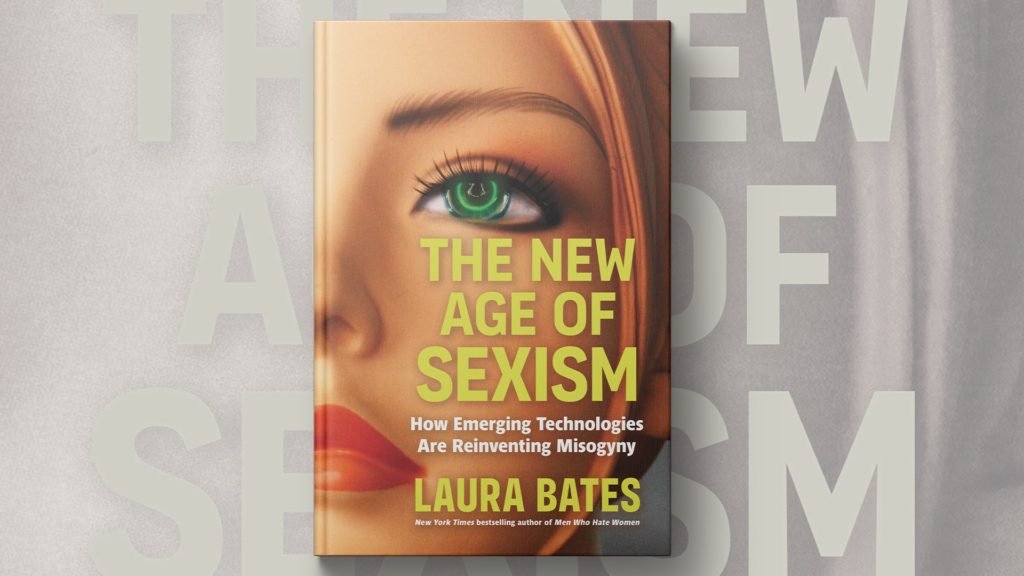
Artificial intelligence and emerging technologies are already reshaping the world around us. But how are age-old inequalities showing up in this new digital frontier? In “The New Age of Sexism,” author and feminist activist Laura Bates explores the biases now being replicated everywhere from ChatGPT to the Metaverse. Amna Nawaz sat down with Bates to discuss more.
AI Research
Creating the future with AI: Loyola University Chicago
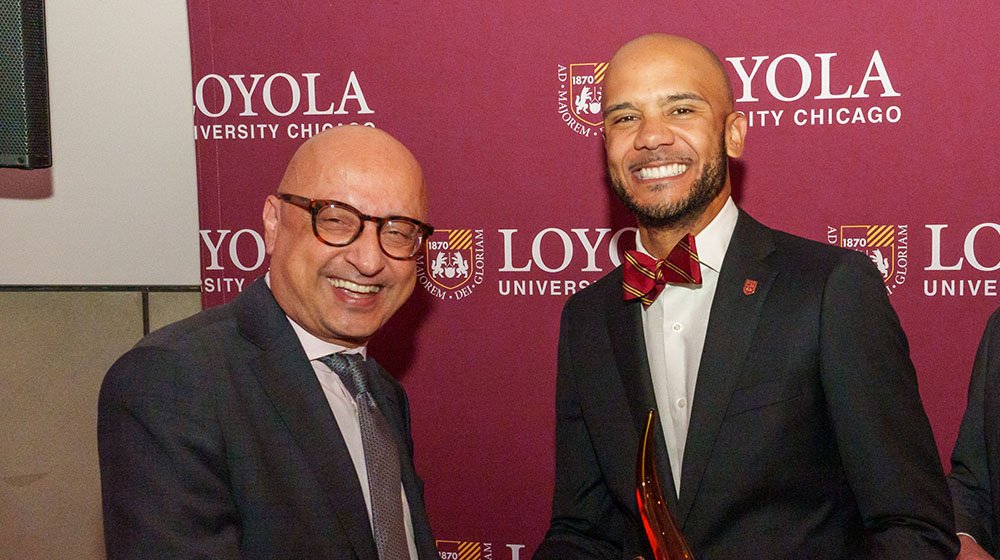
Wayne Kimball Jr. (right) and Dean Michael Behnam after Kimball received the 2024 Rambler on the Rise Award from Loyola’s Office of Alumni Relations.
When he was seven years old, Wayne Kimball Jr. sold watermelons on the side of the road in rural North Carolina. A few years later, he would build and fix computers in his neighborhood. With a can-do attitude and drive to find new solutions, he worked his way up from there to being a leader for tech giant Google, where he now serves as the Global Head of Growth Strategy & Market Acceleration for Google Cloud’s Business Intelligence portfolio.
Kimball’s journey has taken him around the globe, from North Carolina to Silicon Valley to the Midwest to his current home in Los Angeles. But regardless of where he has lived and worked, Kimball has remained committed to helping others, both as a Quinlan alumnus and as a community leader.
Exploring new horizons
Kimball had nearly a decade of experience in business operations, strategic investments, and management consulting before he returned to Google in 2020. There, he served as Principal for the Cloud M&A business, and subsequently as the Head of AI Strategy and Operations for Google Cloud.
“Working in corporate strategy roles at Google has a truly fulfilling opportunity because we are building for the future in spaces that don’t currently exist,” Kimball said. “I love the challenge of building the plane while flying it.”
Kimball led the integration of Mandiant, Google Cloud’s largest acquisition. In his current role, he is building global programs to accelerate business growth in alignment with the business intelligence product roadmap, delivering ‘artificial intelligence for business intelligence’ so that customers can talk to their data.
“How AI is applied varies depending on the use case and the industry,” Kimball said. “The application can be broad and scalable, yet very nuanced at the same time. AI in the medical field can be very different from AI in retail or logistics or higher education. There’s a lot of work being done to develop niche solutions for very specific use cases.”
Breaking down barriers
When he’s not seeking the next advancement in AI, Kimball works to elevate others. He says entrepreneurship is what helped him unlock the American dream and build wealth, but he learned early on that opportunity wasn’t always equitable.
“I found that despite the community’s need for entrepreneurship, entrepreneurs of color had disproportionally lower resources, particularly lacking access to networks and capital, which directly impacts opportunity for success and sustainability,” Kimball said.
Throughout his career, Kimball has volunteered and held leadership roles in organizations aimed at lifting and empowering communities that have been historically cut off from opportunity. Wayne has remained civically engaged by serving as the Western Regional Vice President of Alpha Phi Alpha Fraternity, Inc, the oldest intercollegiate historically African American fraternity founded at Cornell University in 1906, along with 100 Black Men of America.
Staying connected
Kimball has remained highly involved with the Quinlan community, with frequent in-person visits to Quinlan classrooms, virtual visits with MBA classes, hosting undergraduate students during the Quinlan Ramble, and meetings with other alumni. In Los Angeles, he is an active member of Loyola’s regional alumni community.
This commitment to Quinlan was recognized in 2024 when Kimball was awarded Loyola’s Rambler on the Rise award, which recognizes alumni who are servant leaders in their communities, exemplify excellence in their fields, and are engaged with Loyola after graduation. Returning to campus to accept the award brought back fond memories. That same year, he was elected to the Quinlan Dean’s Board of Advisors.
“It’s always special when you can go back to the place that contributed so much to the person and professional that you are,” Kimball said. “I was incredibly honored to be nominated, let alone receive the award.”
He credits Quinlan with helping to shape him into the transformational global leader he is today. “I’ve always been a firm believer that you should be proud of where you work, go to school, and your family, and I’m proud to be a Loyola alum and more directly a Quinlan alum,” said Kimball.
Learn more
AI Research
Sam’s Club Rolls Out AI for Managers
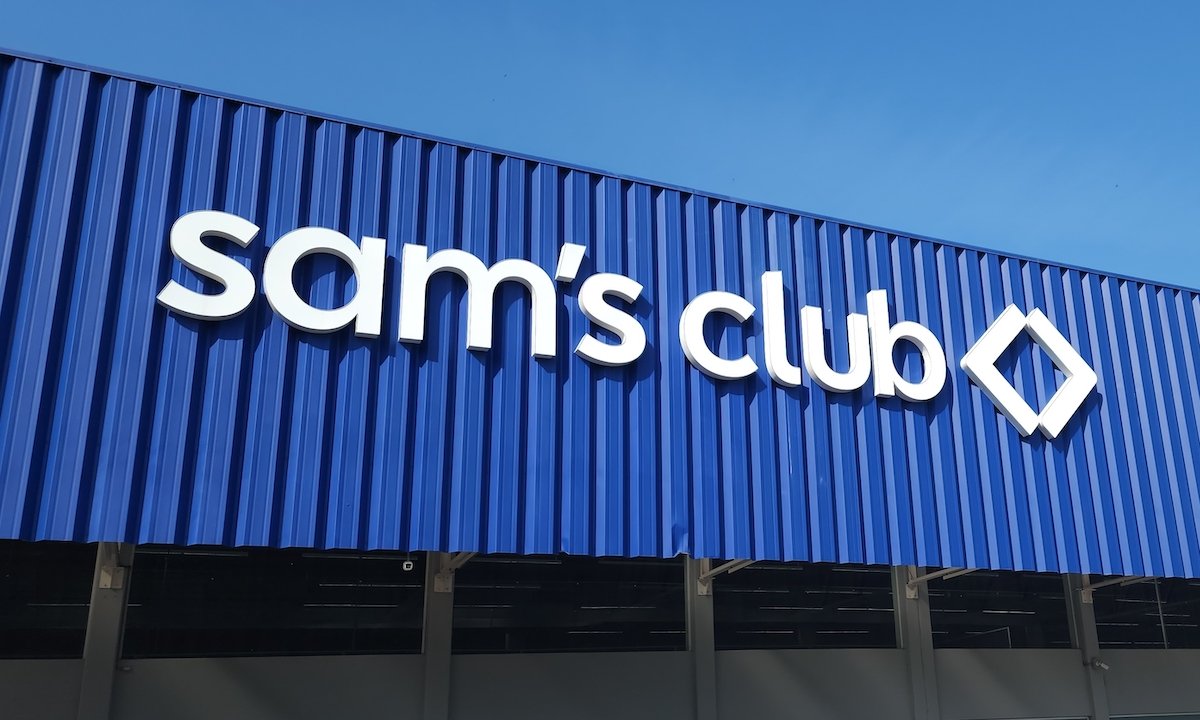
Sam’s Club is moving artificial intelligence out of the back office and onto the sales floor.
-

 Business2 weeks ago
Business2 weeks agoThe Guardian view on Trump and the Fed: independence is no substitute for accountability | Editorial
-
Tools & Platforms4 weeks ago
Building Trust in Military AI Starts with Opening the Black Box – War on the Rocks
-

 Ethics & Policy2 months ago
Ethics & Policy2 months agoSDAIA Supports Saudi Arabia’s Leadership in Shaping Global AI Ethics, Policy, and Research – وكالة الأنباء السعودية
-

 Events & Conferences4 months ago
Events & Conferences4 months agoJourney to 1000 models: Scaling Instagram’s recommendation system
-

 Jobs & Careers2 months ago
Jobs & Careers2 months agoMumbai-based Perplexity Alternative Has 60k+ Users Without Funding
-

 Education2 months ago
Education2 months agoVEX Robotics launches AI-powered classroom robotics system
-

 Podcasts & Talks2 months ago
Podcasts & Talks2 months agoHappy 4th of July! 🎆 Made with Veo 3 in Gemini
-

 Education2 months ago
Education2 months agoMacron says UK and France have duty to tackle illegal migration ‘with humanity, solidarity and firmness’ – UK politics live | Politics
-

 Funding & Business2 months ago
Funding & Business2 months agoKayak and Expedia race to build AI travel agents that turn social posts into itineraries
-

 Podcasts & Talks2 months ago
Podcasts & Talks2 months agoOpenAI 🤝 @teamganassi


